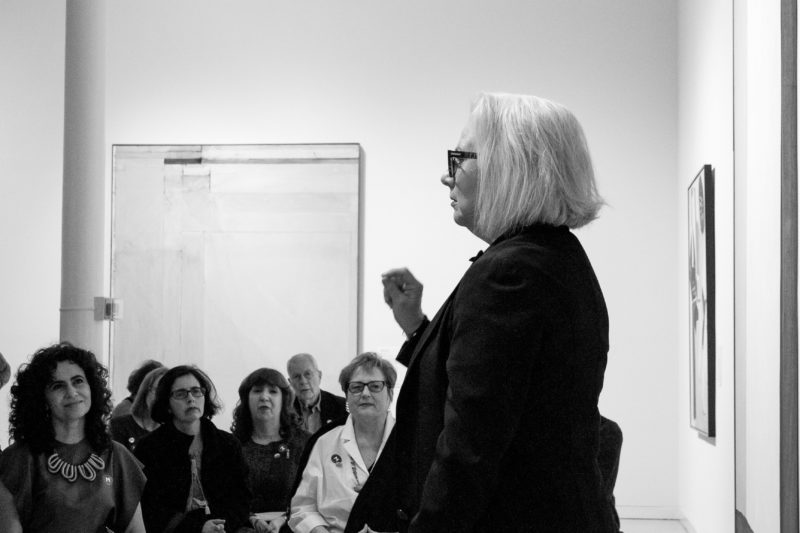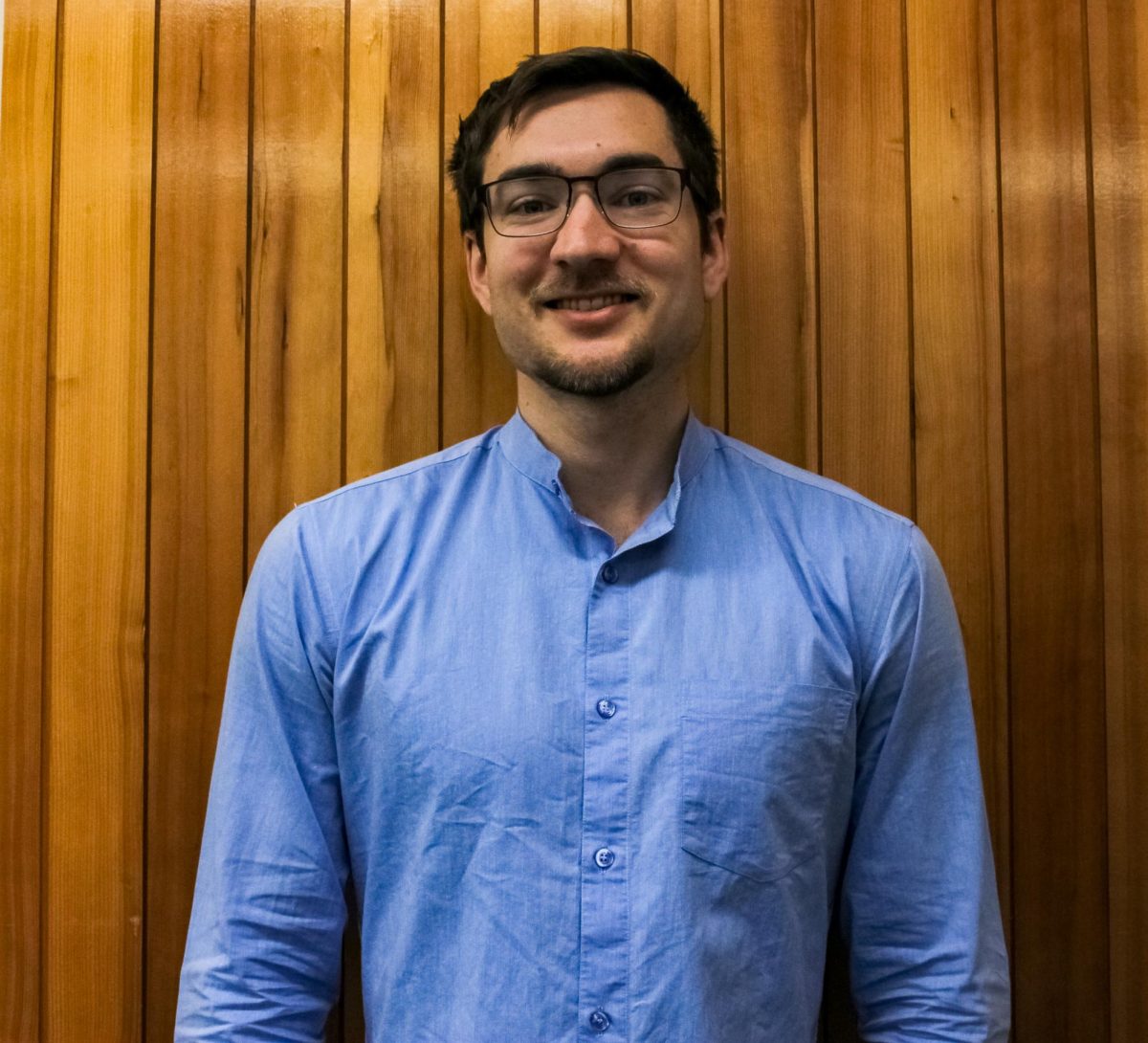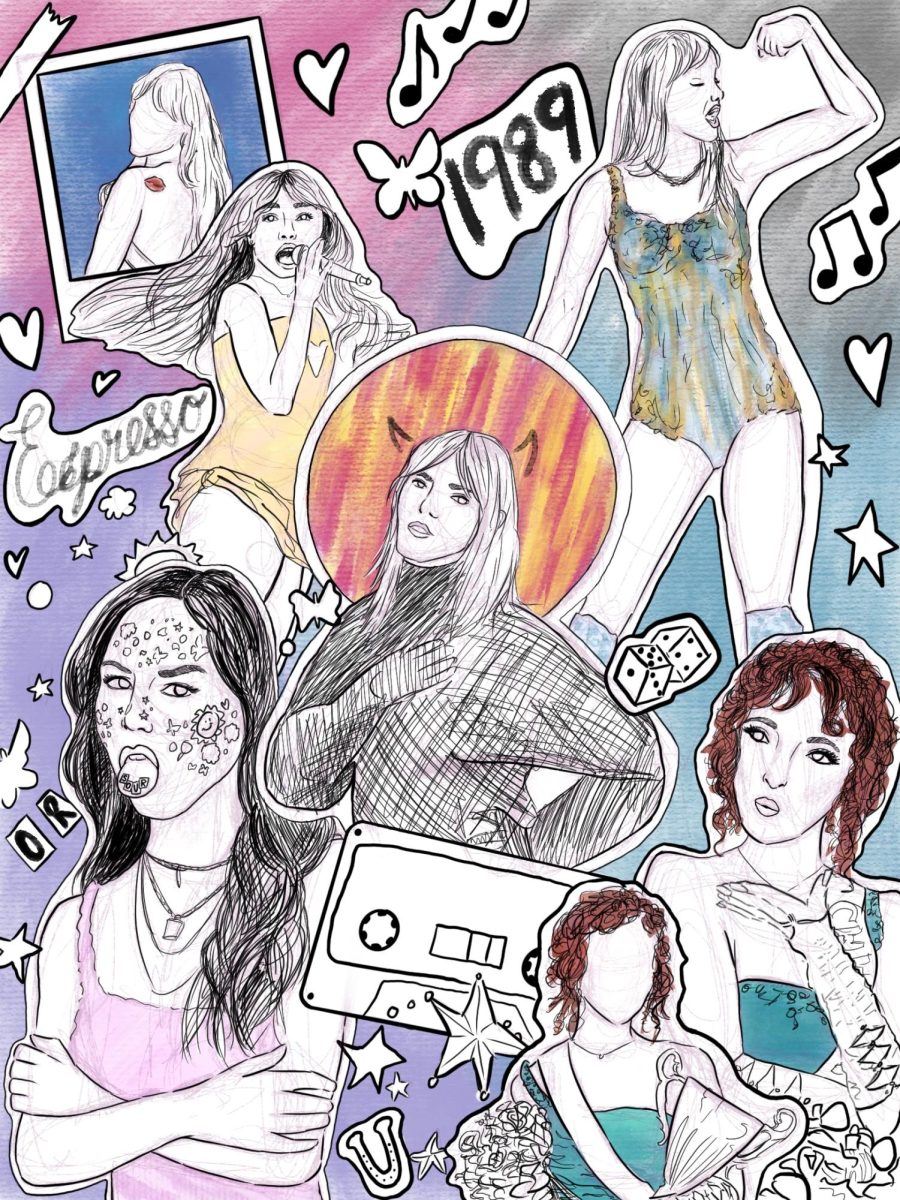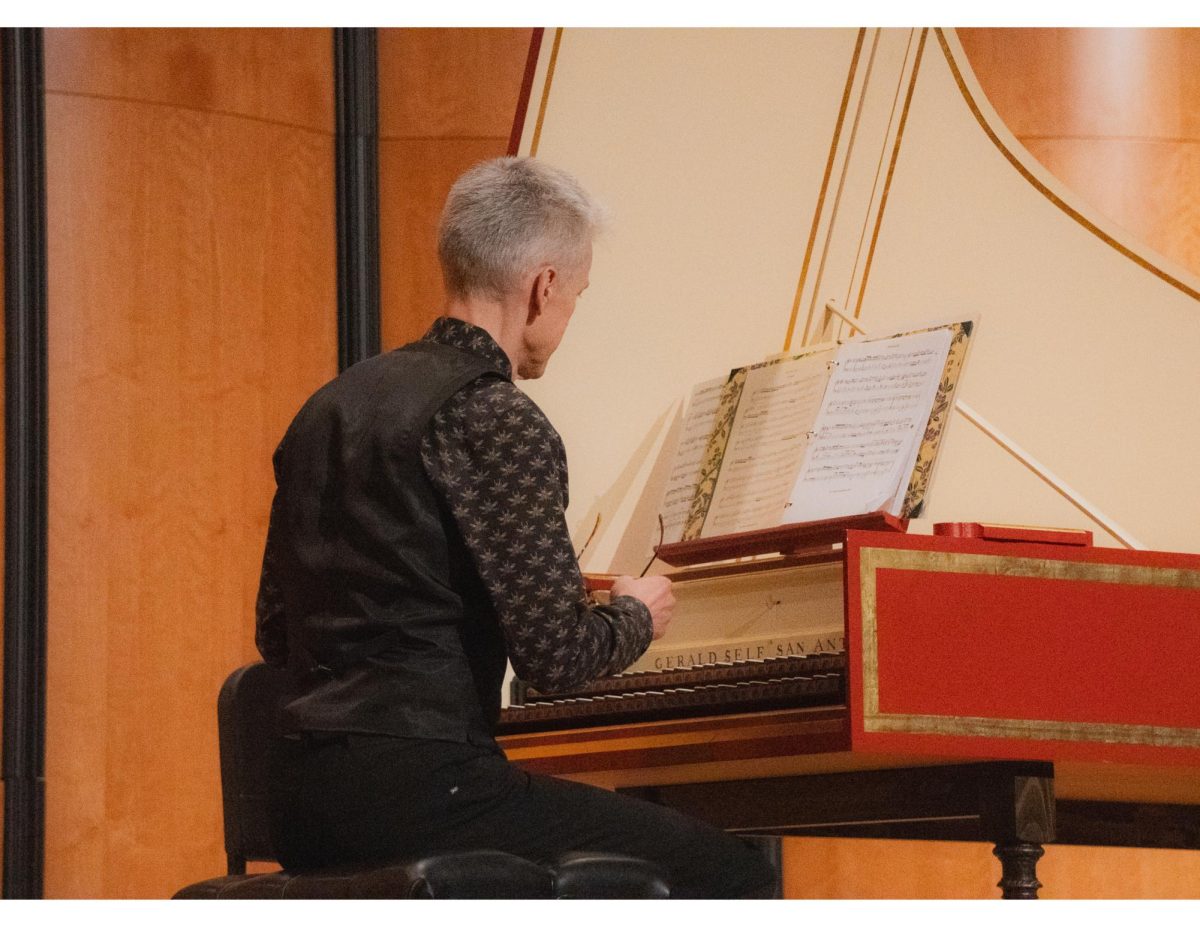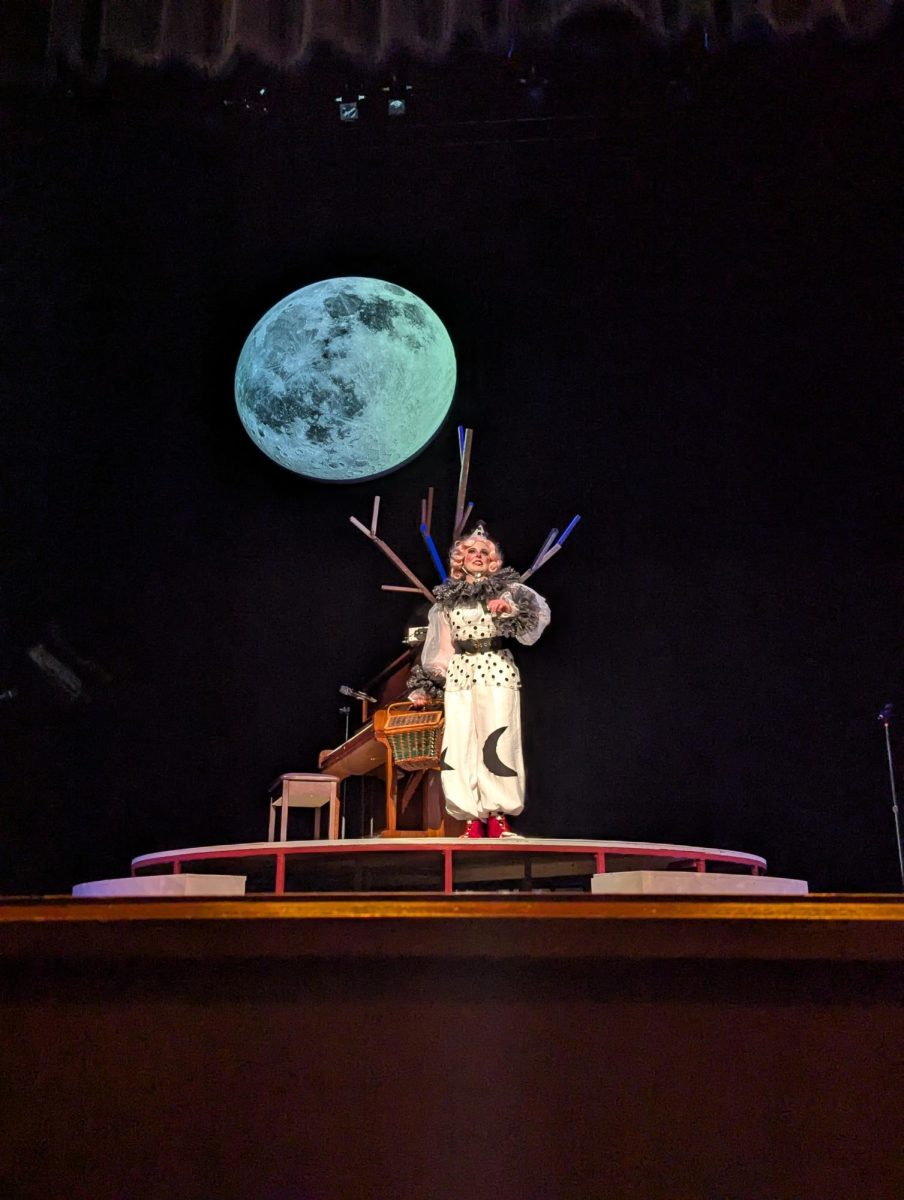Suzanne Weaver serves as the San Antonio Museum of Art’s Brown Foundation Curator of Modern and Contemporary Art. On Friday, January 20, she discussed select pieces of the museum’s contemporary collection during her On the Cusp of Change event.
On the Cusp of Change is a discussion series that allowing paying visitors an opportunity to be led through the museum’s various collections by their respective curators. The talks focus on changes in the collections such as the acquisition of new works of art or changes in artmaking “” i.e., subject matter, techniques and materials. A Q&A followed a tour of the room with a wine and cheese reception closing the evening. The event marked exactly six months since Weaver began working at SAMA.
Her touch has yet to leave an impression on the installation of the contemporary galleries. Because of various gallery closures and construction schedules, Weaver will have to wait until this coming fall before organizing a full reinstallation of the permanent collection. This time will allow her to bring focus and clarity to the collection. The Trinitonian sat down in Rosella’s for a conversation with Weaver to discuss the following weekend’s event, the changes she’d like to bring to the contemporary collection and the relationship between the SAMA and Trinity University.
Would you discuss your Cusp of Change experience?
The Cusp of Change was an idea to have the different curators speak about their collections. It shows where their thinking is on the collection and the exhibition programs. It’s an opportunity to have more of a conversational dialogue with people in a more casual atmosphere as opposed to standing in front of a lecture hall and doing slides. Hopefully it allowed more conversation while getting people in front of the works. It ended up being very popular and successful having people there, present and thinking. The most important thing you can do is get people thinking about why a work exists. It’s got to get people to look at the work, not just think of it in terms of its categories.
On Friday you addressed the irony of the inauguration date’s changing nature.
Yeah, but contemporary art is all about change and it definitely speaks to our time. It’s always about what’s going on either politically, socially, or technologically. Yet artists will still make work that you think is traditional like landscape and portrait. Artists still deal with those issues but with new technologies, or through a new way of doing it.
Political art goes in waves. There was real political art in the “˜90s when people started thinking about identity, and I think now there is going to be more political art. There will be major exhibitions dealing with political issues. There always is but now it’s going to be intensified. Curators that are organizing the exhibitions are thinking that it can’t be relevant unless it deals with the politics, and this will reflect in the collection.
What are some other influences you’re ready to bring in?
As an encyclopedic museum, SAMA has an opportunity to show work which can be looked at more critically. I’ve been looking at our collection and I’ve discovered some works by a number of self-taught artists, or artists who weren’t formally trained. These artists have come up with a way to make art out of a real necessity. The French artist , Dubuffet, understood a similar style as the art of the insane, utilizing what he called a raw vision.
Some of these artists have been in mental institutions or living in the country throughout their lives, but they shouldn’t be misinterpreted as stupid. It’s not as if they don’t know culture because they’ve seen it through the magazines. Their art just hasn’t received the critical vision that it now can.
I want to put artists together that have been formally trained and have gone to universities to look at these artists that have taught themselves or figured out their own strategies in a new critical light. I want to reinstall so you can start seeing what my thinking is and where the museum might be able to go. But beyond just talking about the reinstallations, I’d love to start a series of art and dialogues. I want to have thinkers come in that are either writers, artists or curators working on a project and discuss the way they look and write. It’s looking behind people’s thinking.
Along with those unseen works are there any specific acquisitions you’re bringing in?
Yes, I’ve made some acquisitions that I’m very excited about. There will be some work by an incredibly important African-American artist named Rodney McMillian. He does video installations that bring his personal history and experience as a black male into some larger issues. Others will be from Daniel Rios Rodriguez who is a young artist that just moved back to San Antonio. He’s another artist that I’m interested in, in that if you look at his work you may think that he’s self-taught in ways that are reminiscent of that outsider type of art. However, he’s highly educated. He went to Yale and is really smart about painting. His work is personal, although when you look at it there’s this whole abstract cosmology. He lives here along the river and walks along the river almost every day twice a day collecting stuff. His paintings are very physical by the way he imbeds things in them. His frames are also his own. I think it’s a refreshing vision.
Is that a way to showcase more Hispanic influences in contemporary art?
Not exactly, San Antonio just has so much fabulous art enriched by its hispanic influences. In fact I am going to do a show for the city’s Tricentennial featuring artists of Mexico City: art, architecture and design. In terms of the instillation, it’s more complicated than just identifying and displaying the art. There’s also presenting a context of Chicano art. For instance, there’s some more political radicalism and I do think we have a responsibility to show it. The research I’m doing right now is on how to approach this. I’m not sure exactly how I’m going to show the more politically radical end of it yet. The museum with its history and its context has to thoughtfully think about how you present the story of Latin American Art. You don’t want to just play to it with a little bit of this and that, but in a very meaningful and lasting way.
Trinity University has a relationship with the SAMA, but would you like to see it grow more?
I’ve thought about this because I’ve worked in universities. I think we do have a really good relationship with Trinity through our partnership with the library (and free admittance with a Trinity ID). We could grow it by having students interact with lecturers and artists we have for exhibitions. Maybe if they do a project with the museum the students could work with them for the project? Maybe there’s a residency that we can share? There’s so many ways of sharing resources and connections. I think the university and the museum have an obligation to figure out what can make the city really great. I’ve noticed there are so many pockets in San Antonio. There needs to be a new way to work together to create a new city. It’s about ideas, having a higher level of intellectual discussion and thinking that requires seeing the bigger picture, the city.

